Nowadays, if someone is going to dress up, they might reach for a pair of jeans as a point of foundation in that outfit, as the apparent next step up in formality from the otherwise everyday sweatpants or athleisure clothing. Granted, there are absolutely times when denim is the right choice for a going-out look. So, are they the modern “fancy pants?”
Early History of Denim
There’s no denying that a pair of jeans has become the universal choice when it comes to a multitude of events. Think of occasions that traditionally have a higher level of formality, and I guarantee you’ll find someone donning denim.
You’ve certainly seen it with your own eyes, whether it’s sitting down to enjoy a theater show, joining other diners at an upmarket restaurant, or even attending a wedding. You just can’t escape that jeans are very present in these traditionally formal attire-only situations. So, as we ponder the sartorial conundrum, let’s take a look at a time before denim took over.
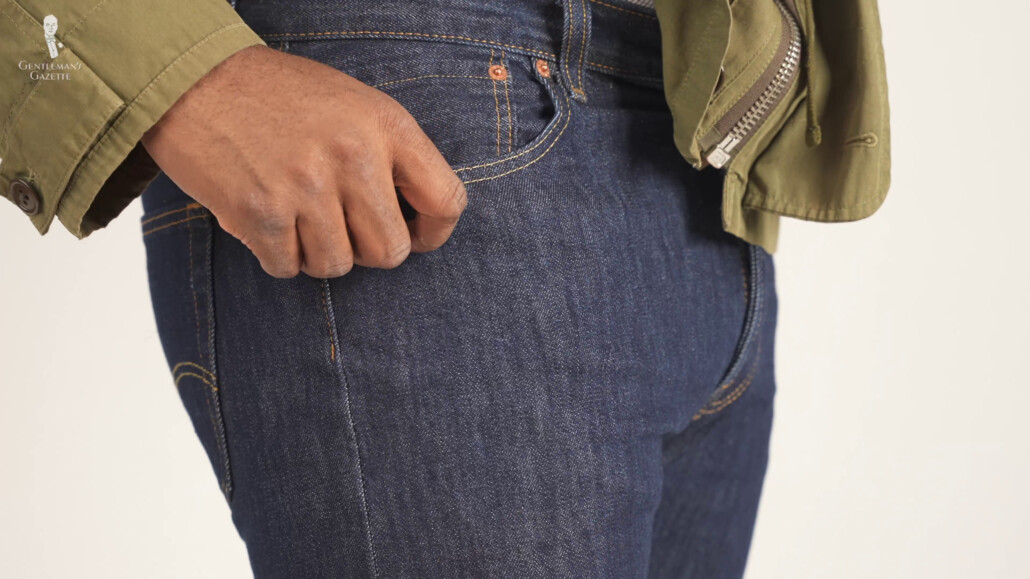
We have been to the history of jeans with a review of the American classic Levi’s 501. So, if you’d like to know our thoughts on these iconic jeans or learn more about the history of denim, then you’ll really enjoy that review as a companion to this post.
Levi’s 501 Jeans: Are They Worth It? (In-Depth Review)
In a nutshell, denim has been used to craft jeans since the mid-1800s. They were actually closer to overalls than the standard jeans model that we’re used to seeing today, even being referred to as overalls in their marketing.
As you can see, the use of these early jeans was strictly practical, as the choice of sturdy denim and copper rivets to reinforce the seams were hardly comparable to the wool suits of the city in terms of elegance. But that’s the beauty of both of these fabrics. Each performs a different function for a different setting.
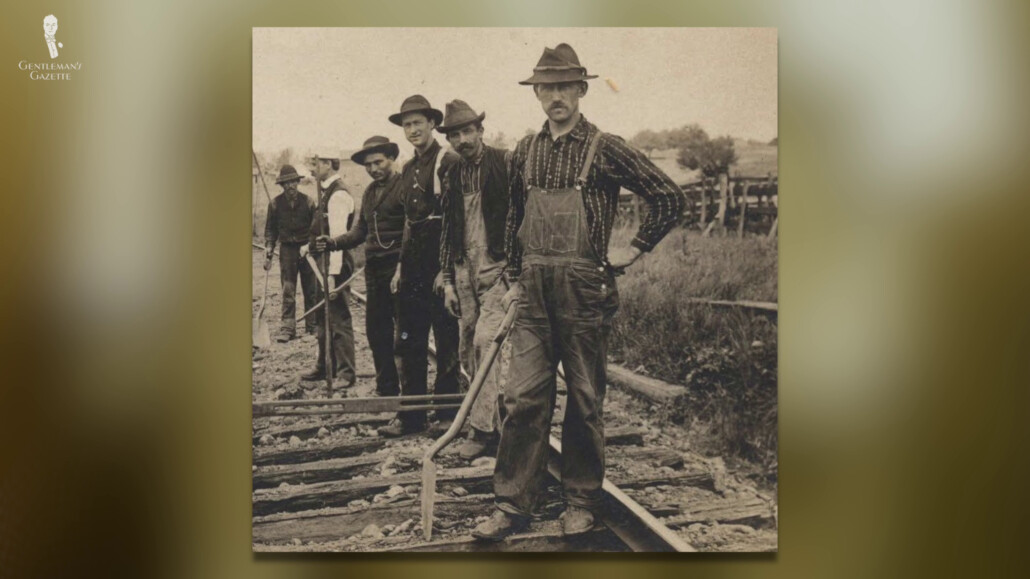
So, for a decent portion of denim’s history, jeans were strictly worn for manual labor and wouldn’t have ever been seen outside of these settings. It’s important to remember that society, at this time, was very rigid and its etiquette and codes.
There was a visible class difference, where people were expected to look and behave in a particular way, depending on what class they were in. And most people, regardless of their class, would own a set of the best clothes to be as respectable as possible whenever they needed.
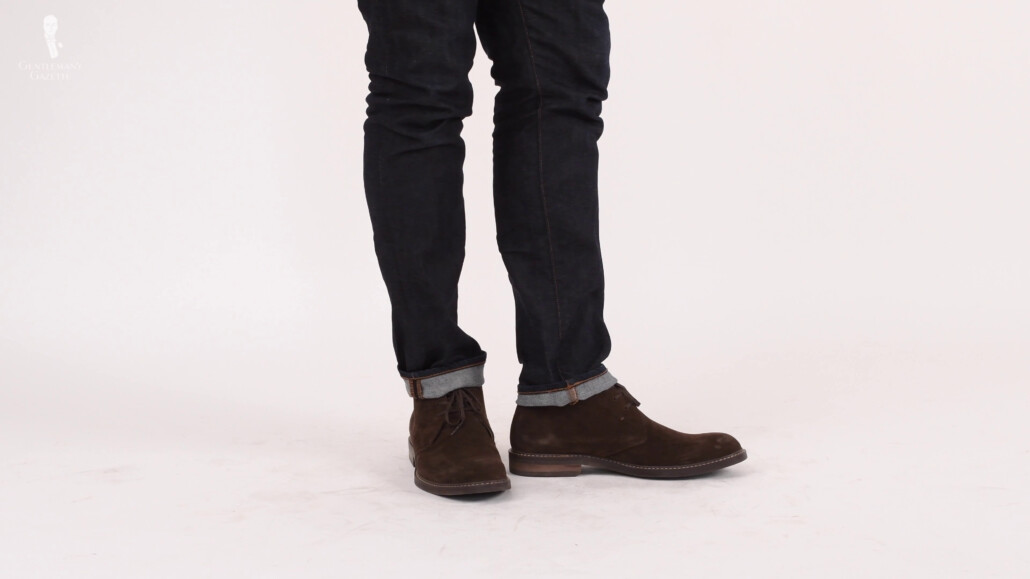
So, what we see in the early days of jeans is that they exist to protect the manual laborer. And that’s pretty much it. Clearly, at this time, jeans were not considered fancy at all, but perhaps, the streamlining of the design around the 1930s was the first step toward the wider acceptance of jeans.
Counter-Culture and Casualization
If we look at the 1960s and ’70s, these decades hold a few painful fashion memories. But it’s worth noting that not everyone dressed like they were an extra on the set of an Austin Powers movie.
As we have previously explored in our guide to true 1960s menswear, there was a great deal of stylish menswear, all with a classic flair, which meant it was easier for men to look their best on a wider range of occasions.
What Men REALLY Wore in the 1960s
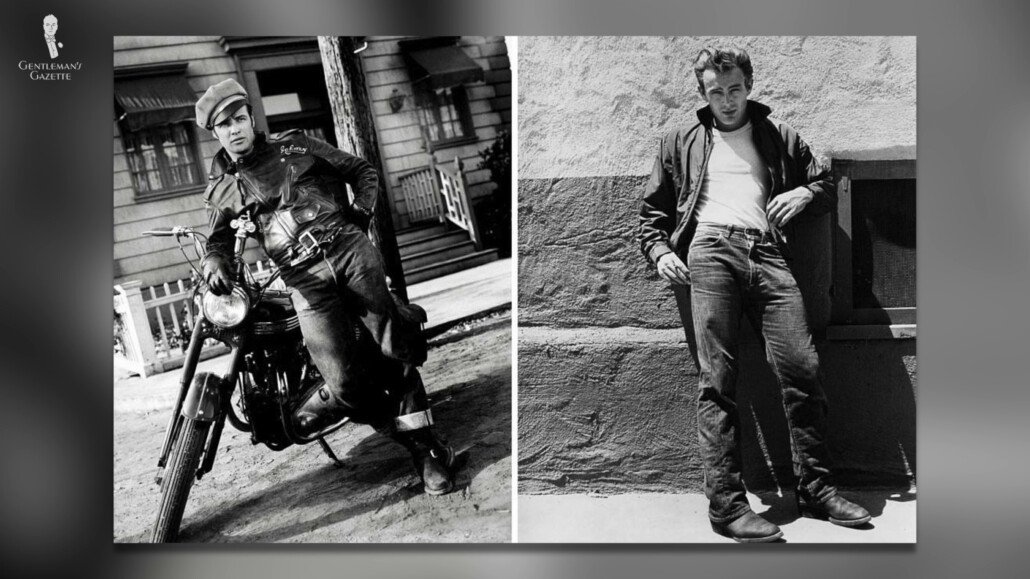
The technicolor explosion of trends in these decades was a way to combat a counterculture movement seen as stuffy or boring clothes, as well as a way to rebel against authority. This particular theme had started a decade prior in the 1950s with cinematic bad boys such as Marlon Brando and James Dean using casual clothing rooted in workwear as a way to promote an air of cool confidence. And even, perhaps, recklessness?
Ultimately, this type of character appealed to an audience who wanted to be different from the generation above them. We all know that celebrities will influence how styles change, as the counterculture movement of the ’60s and ’70s said, “to heck with the tasteful suits.” You can see how jeans were first used as a way to “stick it to the man,” but then became fashionable items themselves in the fashion trends of the mid-20th century.
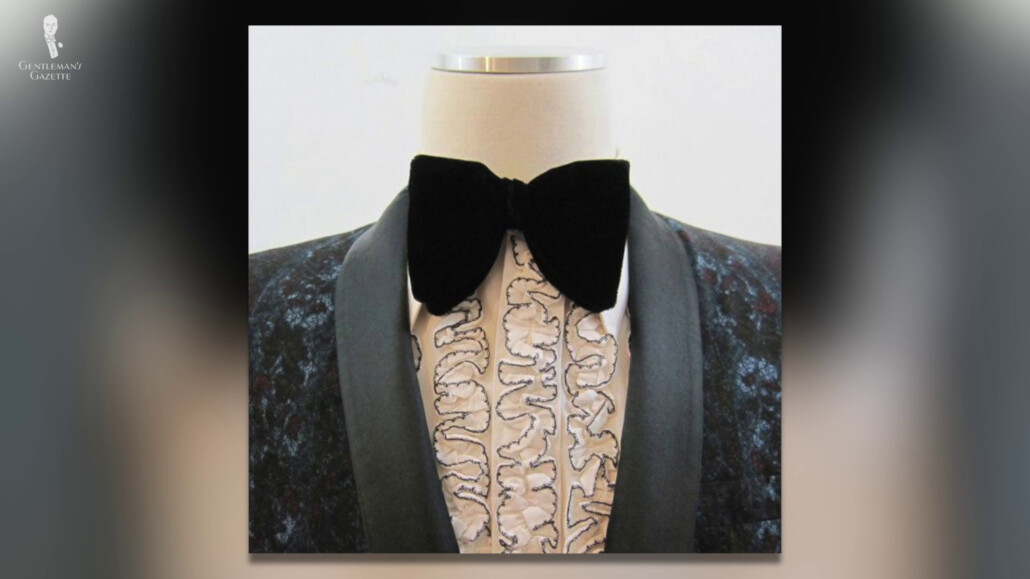
These decades of experimentation did still draw the line between casual and more formal attire, like Black Tie, but even this dress code wasn’t safe from some questionable choices. That thing won’t leave us alone!
Overall, at this time in history, things were very split. They were either in casual or formal clothes. And even throughout the counterculture movement, events with a higher degree of formality were respected, and the jeans stayed at home, but that was set to change in the next decade.
Comfort-First Thinking
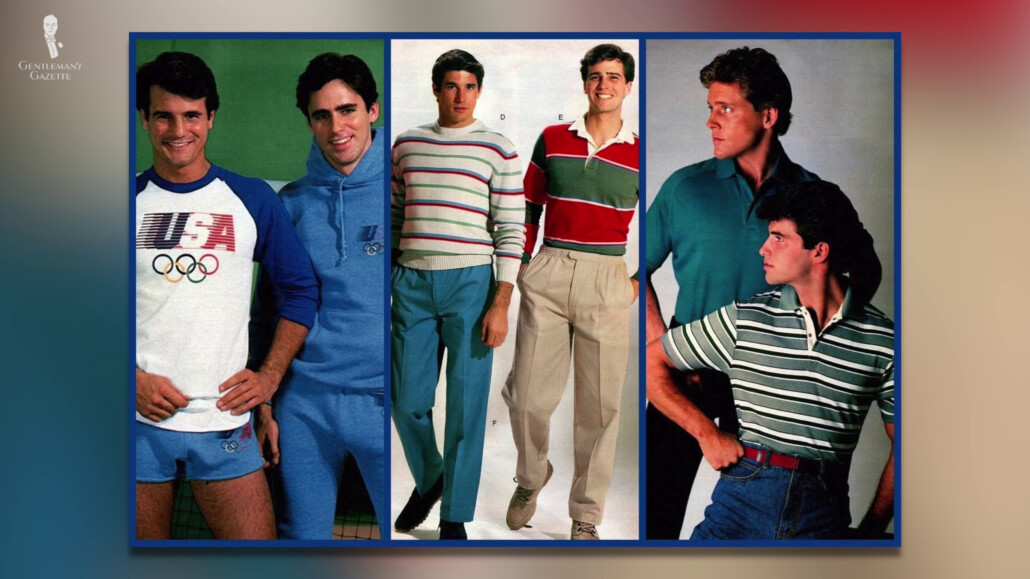
For many, the 1980s was all about excess, exaggeration, and being incredibly bold – whether it was the shoulder pads, the hair, or what brand of item you owned. These elements have been well discussed in both American Psycho and Wall Street, where you can see style mixing with the desire to work hard, as well as play hard.
While people eschewed the flamboyant style in the previous decades for a return to more classically-inspired clothing for business, it’s the element of what you did when you weren’t at work that really boomed in this decade. We all love to lay back and relax, but leisure time was a big deal in the 1980s – and it wasn’t in the “Netflix and chill” style that we know today.
Personal fitness saw a huge increase in popularity with a focus on looking your best both outside and inside the gym. The popularity of movies and TV shows set in exotic locations meant a huge uptake in bright and casual resort wear.
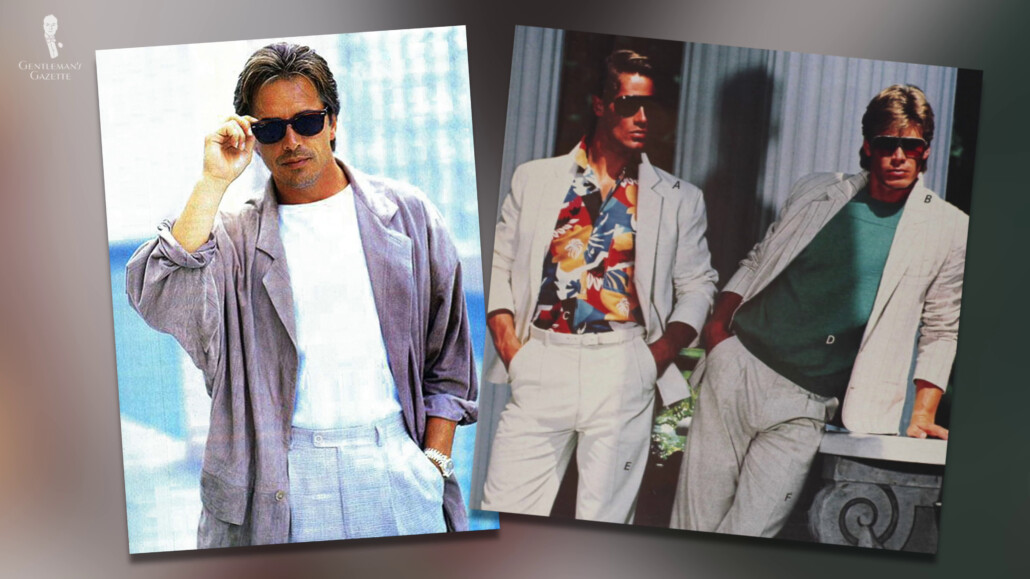
So, for trips to and from the gym, where Lycra was king, you didn’t want to wear something that was too delicate, like a suit. Instead, it was much easier to throw a pair of jeans and a sports shirt into your gym bag because, after all, they were designed to withstand this sort of treatment, where an expensive designer suit just wouldn’t perform.
However, what if you weren’t into the fitness craze of the ’80s? Well, leisure time was still as important, and the ’80s would respond with the best role model for this.
Shows that premiered in the ’80s, like The Simpsons and Seinfeld, were a new breath of life for the average person on the streets, and this type of entertainment was written with an everyday audience in mind. The main characters would often be seen wearing jeans.
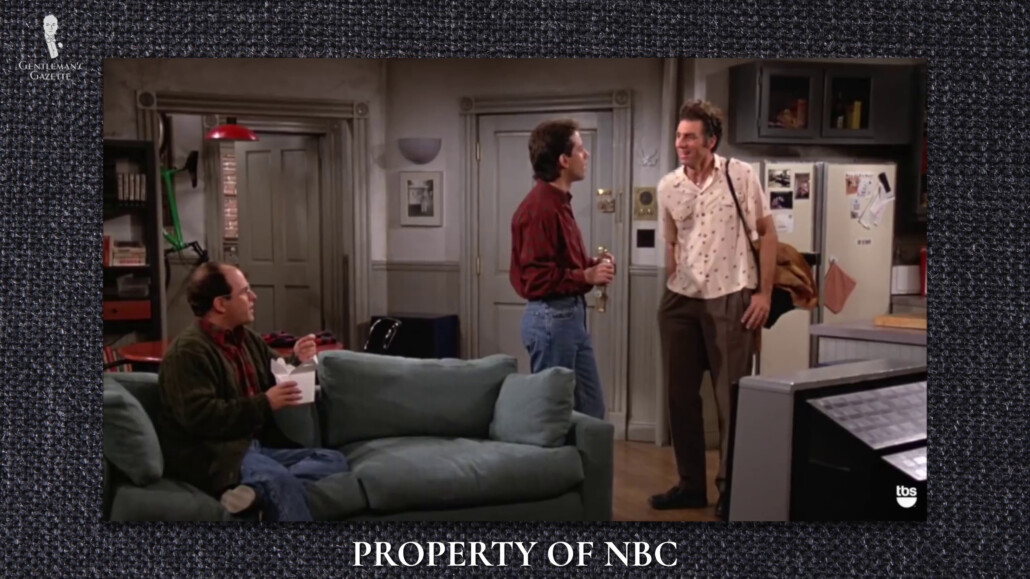
These examples show a major step forward in the overall acceptance of jeans as an everyday garment instead of a workhorse item of clothing or a symbol of rebellion.
The immense casualization of what took place in the ’80s really changed our perception of what we find acceptable in clothing as people started to dress for themselves and for what they felt comfortable in instead of dressing for others and the requirements of the occasion. And this trend would only continue.
Where Things Stand Today
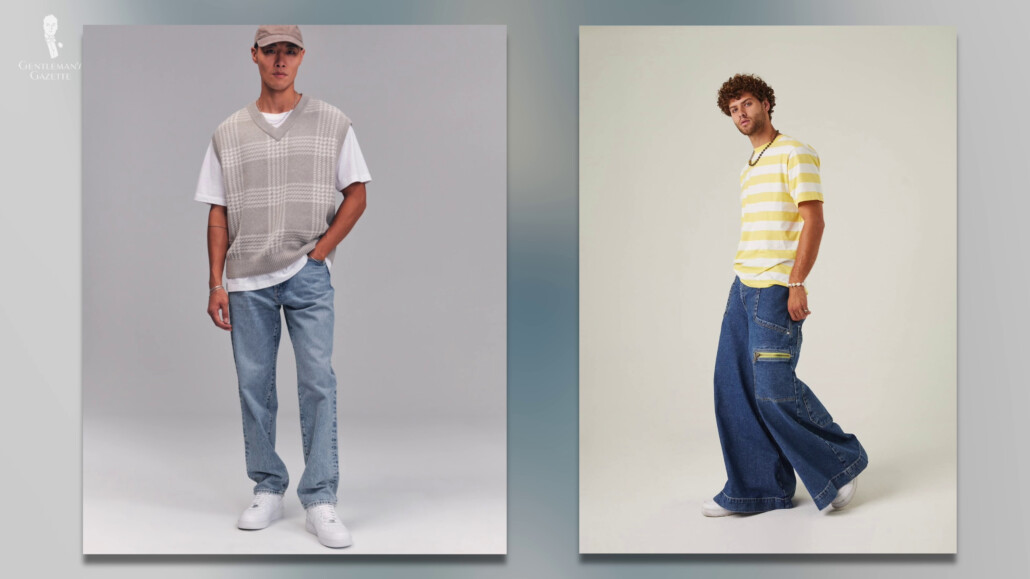
Since the 1990s, we’ve seen a resurgence of chasing trends, similar to how it was in the ’70s, with one particular trend being hard to ignore: designer denim and the subsequent trickle-down of designer styles into mainstream fashion stores.
Throughout the ’90s and 2000s and up to today, what jeans look like has fluctuated greatly and frequently. There have been bootcut jeans, tapered jeans, skinny jeans, spray-on jeans, carrot-fit jeans, and ripped jeans.
What’s safe to say is that jeans have soared in popularity since the new millennium, with pretty much any style of denim pants being a-okay for any situation. And it’s easy to see the reason why jeans have become a luxury item in their own right, as the majority of designer jeans come in at eye-wateringly expensive prices.
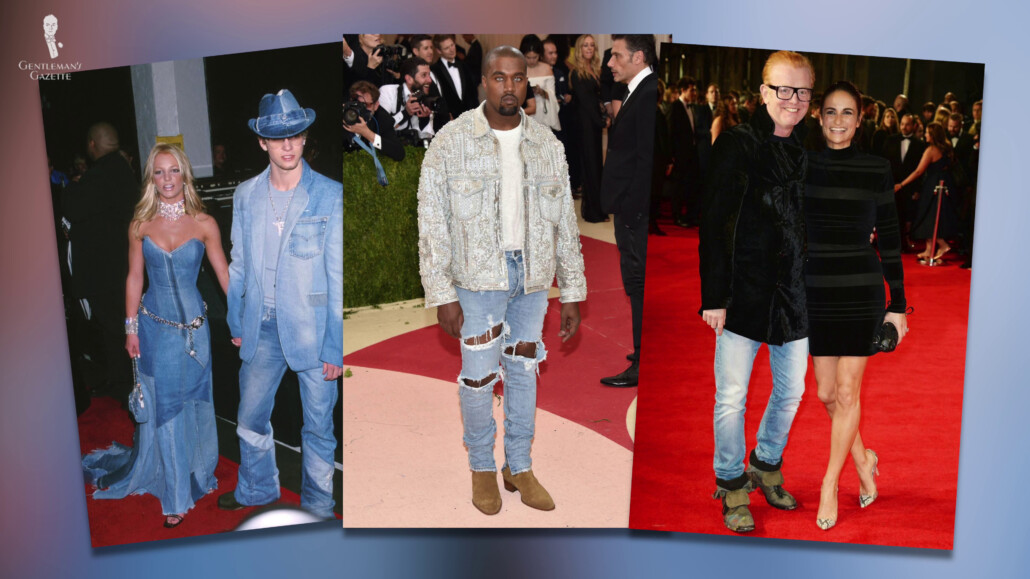
A pair of distressed-looking Ralph Lauren RRL jeans at $499, this dark wash denim from Gucci cost $620, and these jeans from Tom Ford will set you back $770.
With these steep prices, it’s no wonder that people are saving their denim purchases for special occasions. I mean, for the price of one of those pairs and using our secret technique, you can get an entire classic ensemble.
Want further proof? Raphael scored his entire outfit here for $255.32 – almost half the price of the cheapest designer jeans we’ve seen.
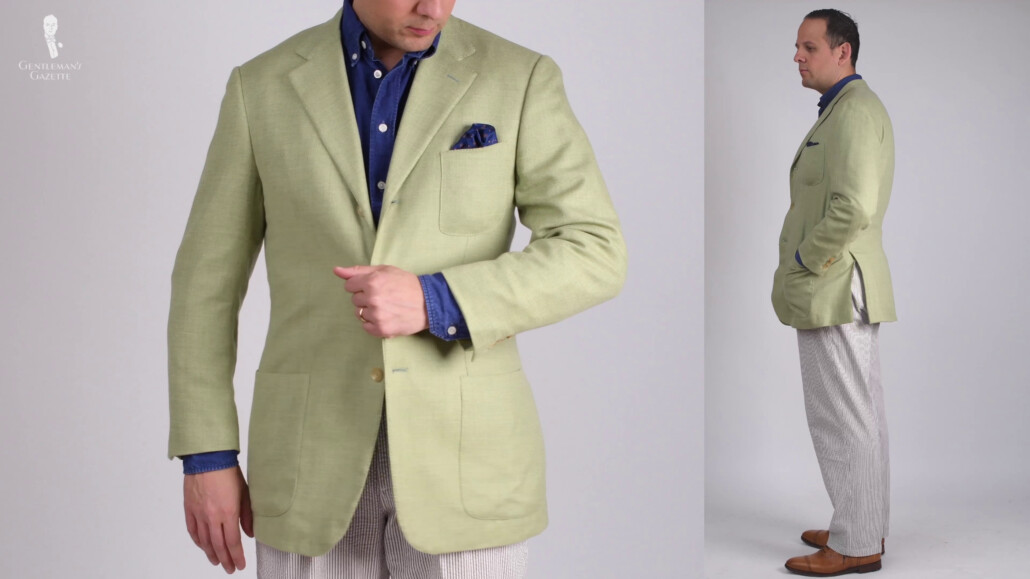
The most fascinating aspect of designer denim is the somewhat paradoxical name. After all, denim has been a hard labor fabric for centuries, and jeans were a signature garment for the everyday person, so it feels a little strange when you see something that started off as workwear now be considered a luxury.
Not only that, but the reality of designer denim is that unless the brand’s logo is literally emblazoned all over the jeans, no one’s really going to be able to tell the difference between it and any other pair.
So, it gives the average person credence to where they’re $50 jeans to a fancy restaurant because other people are doing it in $700 denim, and probably no one can tell the difference.
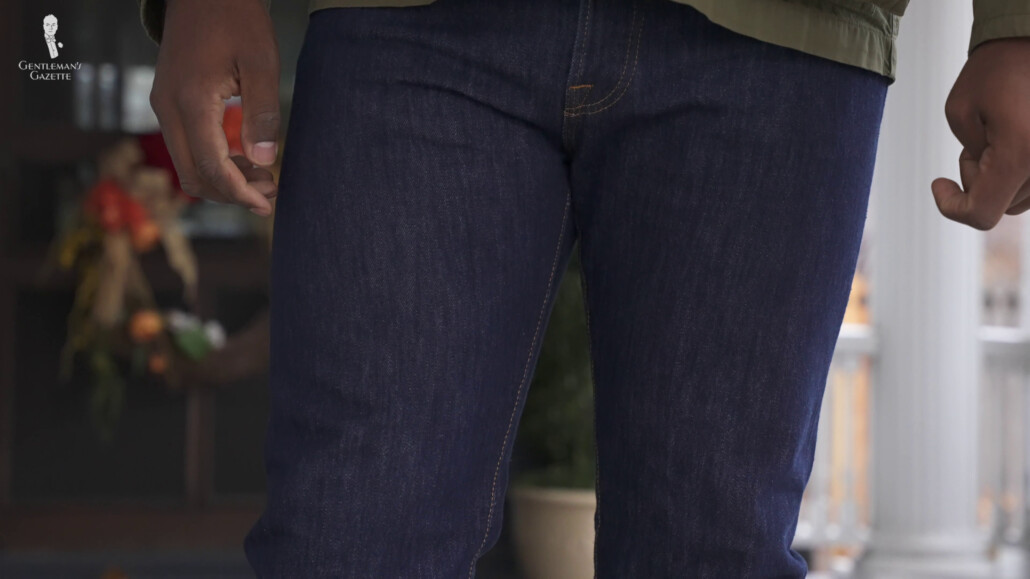
Overly-expensive jeans aren’t the only reason they’re considered fancy nowadays, though. There’s another ’80s trend that’s contributed to the dressing down of the 21st century: athleisure.
Although athletic clothing has been around for decades, it’s had very strict areas where it’s been appropriate. Athleisure has surpassed jeans in terms of what people wear when relaxing. Leggings, jeggings, meggings, and sweatpants – they’ve all become commonplace clothing. And even we at the Gentleman’s Gazette enjoy the occasional piece of athleisure clothing.
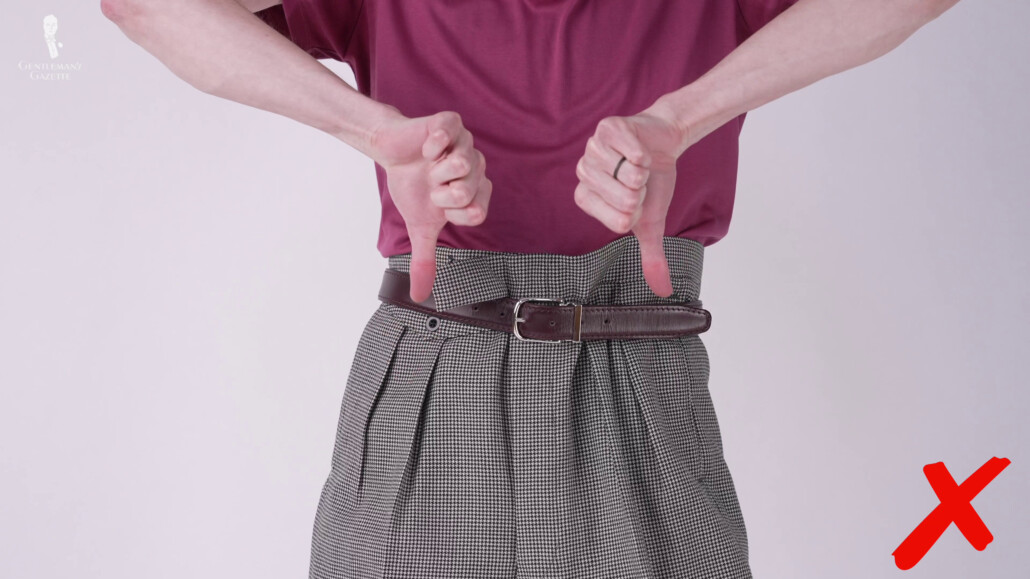
As the comfort-first mindset continues, many people have stated that they find jeans to be uncomfortable when compared to the soft and stretchy leisure wear that they get to wear for the majority of their day. It was easy to see why jeans became a choice when dressing up, as there’s always been this weird universal thought that fancy clothes must be uncomfortable. But, as you know, the reality is clothes are only uncomfortable if they don’t fit you well.
The Best Jeans for Your Style & Body Type – Including Outfits!
Is There Hope For The Future?
As we look to the future, what do things look like? Well, two things give us hope that sartorial standards can be maintained moving forward.
1. Choosing Quality Denim
As suits and ties are becoming more or less nowadays, you may be interested in developing a passion for denim that is designed with tailoring in mind – perfectly complementing the craftsmanship and formality in your wardrobe.
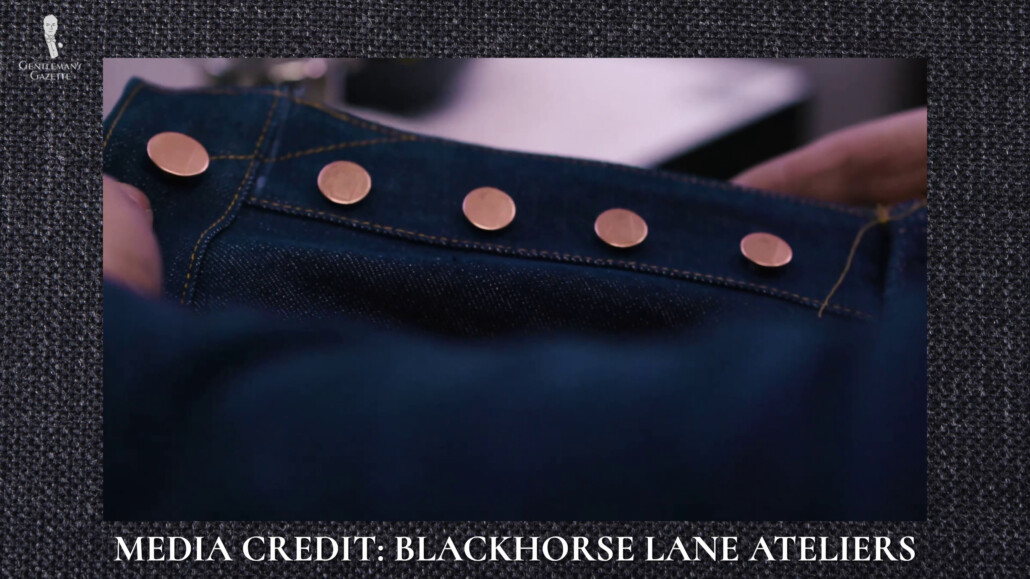
Brands such as Blackhorse Lane in England are putting a huge emphasis on creating a pair of jeans that look timeless and can be paired with classic pieces of clothing, and the construction is at a similar level to bespoke clothing but costs much less than any designer denim we’ve seen.
People are also starting to care more about buying less but better in a move that gets them away from fast fashion shopping. After all, the quality of denim can and should be prepared and rejuvenated over time, and is gonna look all the better for being enjoyed.
2. Classic IS Comfortable
Comfort isn’t just based on how soft or luxurious something feels. You can own a pair of pants from the softest cashmere. But, if they’re five sizes too small, I guarantee you’ll be uncomfortable.
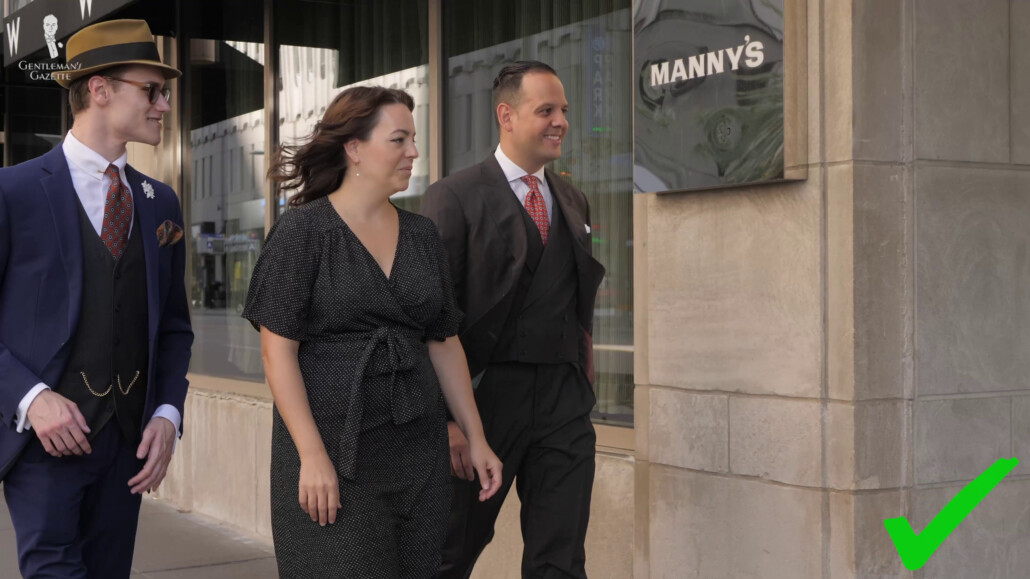
But comfort is also an internal feeling, as I’m sure you’ve experienced embarrassment in some part of your life. We certainly have, and it really doesn’t feel comfortable. Wearing clothing that’s appropriate for the occasion is guaranteed to make you feel comfortable internally, and fancy clothing is rarely uncomfortable. People just think that it is because of negative stereotypes and bad experiences.
Well-fitted clothes and quality materials will feel just as comfortable as jeans or even athleisure. But, you’ll look far better in a soft suit than in a tracksuit, and be more comfortable in yourself too.
Are Jeans Fancy or Formal Now?
So, returning to our main question here of whether jeans are fancy or formal, honestly, the answer has got to be no.
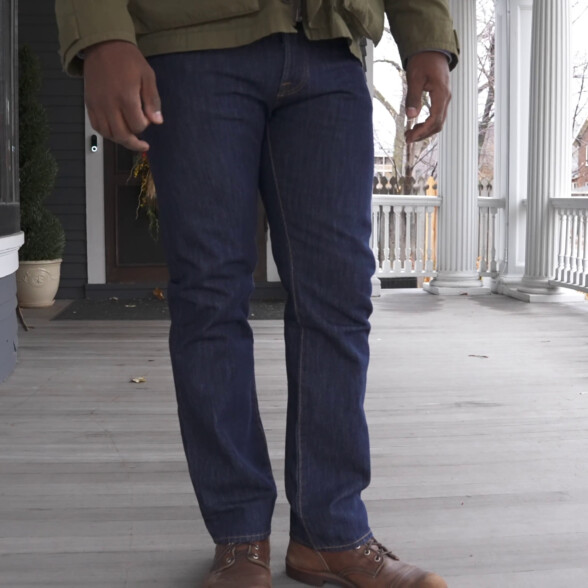
Dress Codes
While jeans are now acceptable in many more situations than they once were, dress codes still exist, and they do still matter.
Dress codes do still exist, and they do still matter, but the appropriateness of jeans has increased with the dawn of athleisure. Good-quality denim will always be better than sweatpants, and choosing a pair of simple, dark-washed jeans in a flattering cut will do wonders for you. You will enjoy a greater variety in your wardrobe and in the outfits you can create.
Don’t be afraid to stretch a little further up in the formality scale, too. We’re certainly not saying you need to wear a suit everywhere because that can be considered just as inappropriate as sweatpants in some settings. But, a nice pair of smart pants and a classic shirt, such as an OCBD, is a great foundation for some of these 21st-century outfits.
Where do you stand on the denim debate? Be sure to join in the conversation in the comments below.
Outfit Rundown
Today, I’m wearing a blue and white checked button-down shirt, a pair of dark wash jeans, and a pair of brown suede chukka boots with a pair of Fort Belvedere socks that are brown with a light blue stripe in the middle. Check out the Fort Belvedere shop for socks like these.
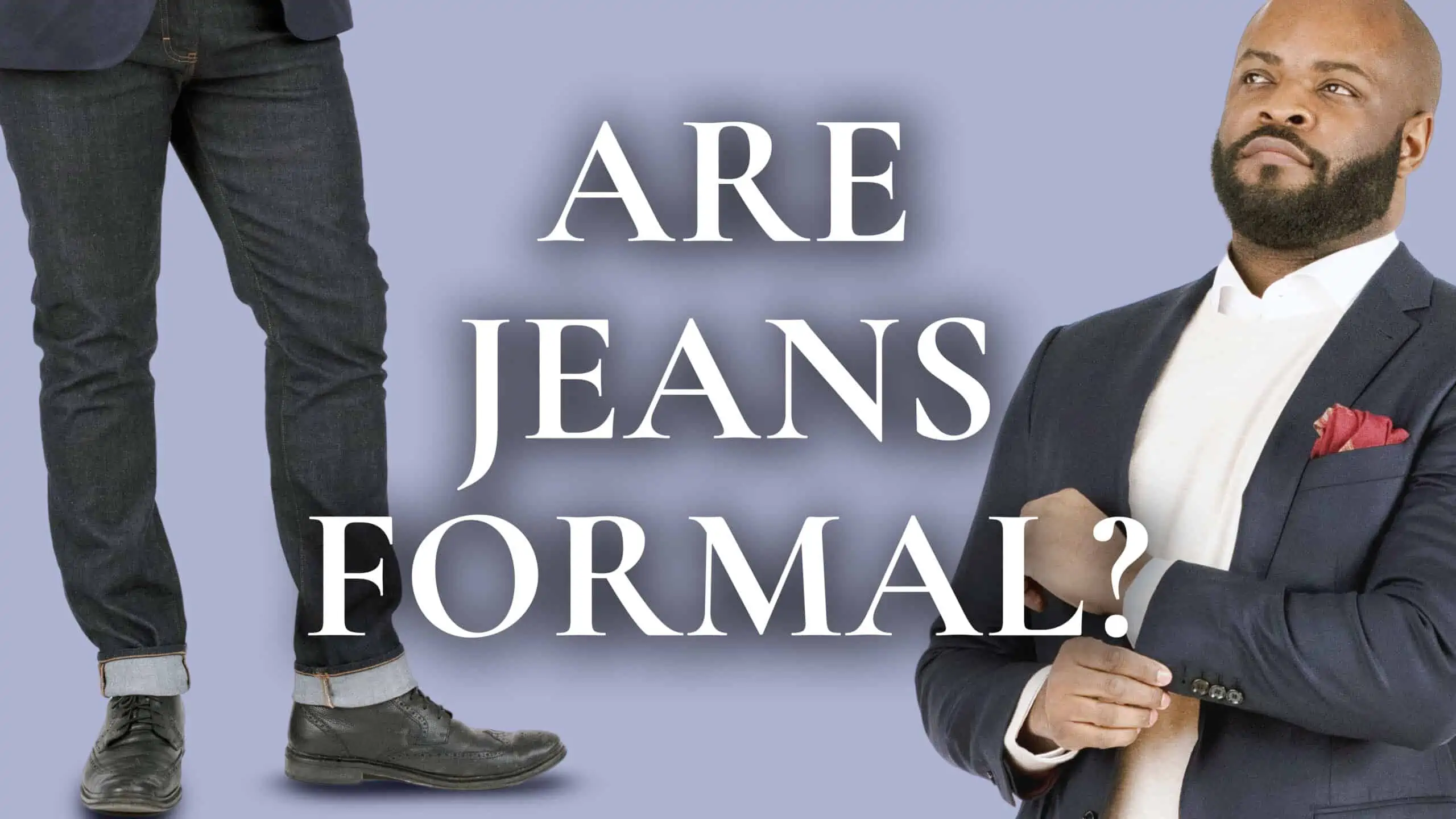
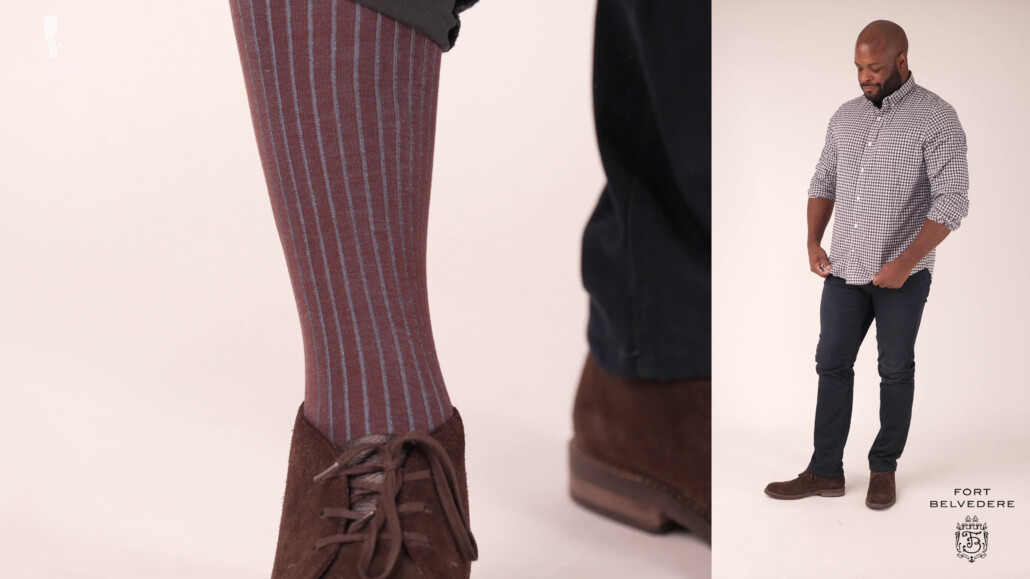
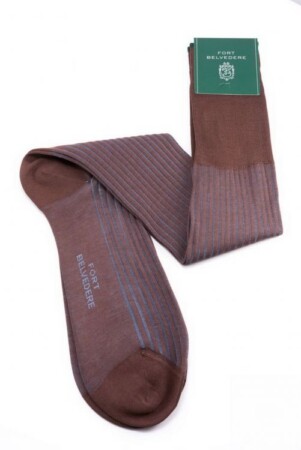
I like the story of some celebrity or other who was refused entry to Harrods owing to their dress code of ‘No ripped jeans’, despite that fact that that was where she had bought them!
Jeans are to formality as Budweiser is to champagne.
Wow, where to begin?
First, great article, as usual.
Second, are jeans formal? No.
I grew up in the 50’s, 60’s, and early 70’s. We had play clothes, school clothes, and good clothes (for church, etc), and there was no overlap. The only place jeans, or dungarees as they were called then, were acceptable were as play or work clothes.
Obviously, times have changed, but in recent years I have attended weddings, funerals, and more formal events where people thought nothing of wearing jeans, and even t-shirts. And not just young people, but people in their 60’s, and 70’s, who were unlikely to have been raised with a standard that found this acceptable.
Despite current the current fashion of jeans and tights everywhere, I cannot bring myself to wear jeans for anything more than casual erranding, dog walking, or yard work.
The fact that some people will spend the better part of a service workers monthly wages to buy a pair of pants that a homeless person would pass up at a thrift store is literally a sign of the decadent crumbling of Western Civilization. A society with no aesthetic standards will soon be a society with no identity and thus no standards of any kind at all.
In a word……NO, NO, HECK NO!!
Definitely not even if for most people, jeans and a hoodie with closed shoes (instead of sweatpants and thongs/slippers) is seemingly the new form of dressing up in so many places.
It is profoundly comforting to read my fellow commenter’s thoughts, I was wondering if I was that last Mohican. No they are absolutely not formal and the places they intrude like poison ivy between paving stones only serve to emphasize the point. But there is only a place for a suit and tie, black tie, and white tie if we make it so. Good article, great work!
ABSOLUTELY NOT. WHOEVER CAME UP WITH THIS SILLY IDEA OF “DRESS JEANS” IS FULL OF YOU KNOW WHAT. THEY ARE JUST AS BAD AS THESE STUPID LOOKING SHOES WITH THE WHITE SOLES.
WHAT IN THE WORLD HAPPENED TO GOOD TASTE. THE WHOLE BLOODY DRESS SCENE FOR MEN IS DISGUSTING. HOW ABOUT THE LADY THAT GETS DRESSED TO THE 9s AND SHOWS UP AT A WEDDING OR SOMETHING WITH SOME DUDE THAT LOOKS LIKE A SAD SACK? NO THANK YOU, I WILL CONTINUE TO DRESS PROPERLY FOR EVERY OCCASION.
BILL
Wild Bill, how very fitting. The written equivalent of screaming (writing your entire message in capitals) only succeeds in diluting or tainting the credibility of you as the author.
As much as casual attire (or people dressing more casually) is hardly a new phenomenon, I agree with your view: people in general are becoming much more apathetic toward adhering to dress codes. Or more to the point, they do not sufficiently think through the nature of the event, the vibe(s) the host(s) are trying to create and take the time to curate outfit(s) that are appropriate. For that reason, I commend your commitment to respecting dress code(s) and dressing appropriately.
I would argue that jeans aren’t formal attire to wear to a wedding, a funeral or upmarket restaurants that call for a jacket and tie (to mention a few) but there are dressy jeans that can be worn outside of yard/farm work or other very informal situations that other GG readers attribute jeans to. Ones like the straight leg, regular fit ones in indigo that Kyle is shown wearing in this article or black ones that are free of distressing, motifs, fraying, embellishments, etc. Dressed up with a collared shirt +/- a sweater and/or sports jacket, I think they’re dressy enough to wear to events like more casual restaurants (where jacket and tie or more formal wear isn’t required) or even for an event stipulating smart casual.
YES, I DID WRITE ALL IN CAPS, THAT’S TO GRAB ATTENTION, IT GOT YOURS DIDN’T IT?
WILD BILL
Attention grabbing, no arguments there. Still doesn’t make it good etiquette.
Beyond the ungentlemanly tone it conveys, all-caps text is actually harder to read.
Touch Wild Bill.
Master of Solo Travels fell for your strategy! LOL.
Agreed, MST.
I find a pair of starched and pressed Wranglers, starched white shirt, high polished Lucchese black square-toe boots and a blazer still work in San Antonio for most activities. Not all, but most.
Charles, much the same in ranching and horse communities in the California Central Valley. Regarding Wranglers, though, they now have severe quality control problems and the fit of their 936 jeans has been altered terribly. Regarding the Luccheses, a great American-made riding boot, but I’ll take exception to the square toes.
A friend of mine told me that when he was a boy he once asked his father, “Dad, why don’t you wear blue jeans?” His father (born in the 1930s) replied, “Because I’m not a farmer.” I would add a few other roles for which the wearing of blue jeans is unobjectionable: being a child, being a college student, being engaged in manual labor, and, of course, being poor. When grown-up men who are not poor and not engaged in manual labor wear them, I see nothing but social conformism and contempt of elegance.
Given your friend’s father grew up in the ‘30s, I can understand why he’d say that but personally I think it’s a bit of a dated view. Social conformism, yes and wearing them in the wrong context (office/customer service roles, weddings, funerals, church services and a number of other situations where dressing more formally is required) I would say contempt for elegance.
Other situations I would say blue jeans are unobjectionable for: recreational pursuits (not playing sport but things like hot air ballooning, taking kids to the park/playground, walking the dog, etc), running errands (supermarket, library, post office, collecting takeaway, etc) and casual social situations (backyard barbecue, cinema not theatre, sporting match and casual dining especially if paired with collared shirt +/- sweater or sports jacket).
Thanks, Kyle, for the refreshing common sense and good humor, as always. Your story brought to mind something I wish GG would comment on: “vanity sizing.”
I got rooked the last time I shopped for jeans, because I was dumb enough to think that my 44″ inch waistline belonged in “44” jeans. It had been a long time since I had bought any clothing, and I was feeling good because I had lost a lot if weight. So, turkey that I am, I went to Target (where I can now afford to shop) and picked out two pair of jeans to fit my 44 waist and 32 inseam. The fitting rooms were off limits because of Covid, and probably still are. So whe I got home, I tried them on and $&@@&$&&@!!! They were wider in the waist than anything I had ever worn at my heaviest! So I learned the hard way about “vanity pricing” (making people feel good by letting them think -and say- they wear “size 44” jeans over their 50 inch waists. I swore I would never go back to that store, and their 800 number phone talkers gave me the brush-off, so I got them altered to fit. This cost the same price as the jeans, so I paid double.
Talk about “ungentlemanly”….how long has the garment industry been faking us out like this? Fitting rooms are disappearing in the places that bottom-dwellers like me can shop; so, could GG put out a warning to the other penurious “faded grandeur” gentlemen about this and maybe other dirty tricks that the industry pulls? It’s one thing to encourage people to pay extra for ripped jeans if they want to, and even to pay $300.00 for jeans that are made dirty in advance as well as ripped. But “vanity pricing”? Never again!
This is pretty common now. Most of the suits I have which are not bespoke are from the relatively sane periods, so no low collar notches, skinny trousers or lapels, oversized shoulders, etc.
I wear a 42 jacket, and have a 10 inch drop. Older garments labeled 42 actually are 42, and need minor tailoring. Now, that same “42” can be pulled 8 inches or more away from my torso the front. Tailoring that would destroy it, not to mention the expense.
Jeans are not formal. They can be genuinely nice though. I am a fan of Alberto jeans and have several pairs that I wear in informal settings. I’ve seen my tailor for length, and I love how they fit. That doesn’t mean I’ll wear them to a formal dinner party or business meeting. Time and place matter.
No, jeans are not formal attire. Although they are being more and more acceptable in formal settings. It is becoming more and more difficult to be able to dress for a specific occasion.
For example, I am living and working in Switzerland, and meet clients and associates quite frequently. I’ve been to many formal business meetings, wearing a suit, only to find myself overdressed for the occasion. My most recent meeting was with a high level government official. He met me wearing jeans, a polo shirt, sport jacket and brogues.
The current era of business attire has left me a bit confused and frustrated. Ive had to spend extra effort, a little reconnaissance, to ensure I am “properly” dressed for the meeting. I’ve even gone as far as bringing jeans and a polo shirt in a bag, but then I have too much stuff to carry.
After watching this video, I’ve decided screw it, I’m going to continue to respect the tradition of wearing a suit to a business meeting whether my host wears a suit or not. I’m going to maintain my professionalism as a businessman.
To Kyle and everyone else who worked on producing this video, nice work. The video was very well researched, informative, and seasoned with just the right amount of humor. It certainly encouraged me to take a stand for what I believe is proper business attire and not to follow the trends of the day.
JUST LIKE WEARING WHITE SOCKS WITH A TUXEDO, SICK.
BILL
I am an 89 year old female who loves jeans!! I had dinner at an upscale retirement home recently and my friend told me that jeans were inappropriate in the dining room. Mine were dark blue straight legs and I wore a lovely blouse, blazer and nice shoes also. We have had a hot debate on Face Book over this incident. And btw, have worn jeans since I was 14 years old when none of my upper crusty friends did. I will continue to wear my jeans…lol. Thanks for listening.
Margaret